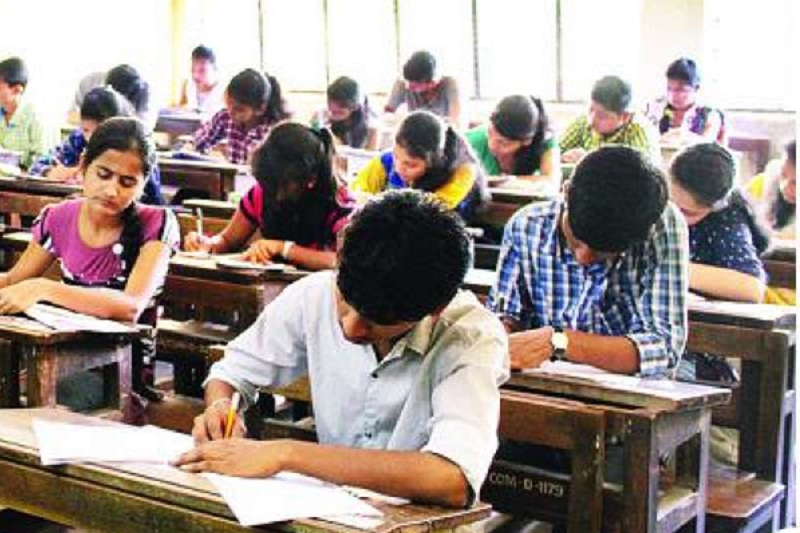Obsession for marks, ranks and Centralization

This year, seven colleges have done the same for 10 UG programs. To make matters worse, 94 UG courses across colleges have a cut-off of 99% plus. A staggering cut off for a staggering number of UG programs! This race for the top in ranking is not a sign of any academic excellence, but in fact a race to the bottom for the education system. The long-standing rules are such that anyone who scores the cut off marks must be given admission. And lo and behold! There are hundreds of such super-brilliant students who qualify and there are not so many sanctioned seats. So, there is a crisis.
Moreover, embedded in this there is an inter-state competition for the seats in Delhi University colleges. The same newspaper had reported a few days ago that among 100 such students scoring 100%, there were 99 from Kerala.
How has this academic imbroglio come about? For getting an insight into the problem, let us look at the Joint Entrance Exam (JEE) system for the IITs. Over the years the questions have become stiffer and stiffer, and often unrealistic. The number of candidates and institutes kept on climbing and climbing so that holding the JEE has become a mammoth exercise with many scopes for errors.
The evaluation or grading process also has become complex, involving hundreds of examiners spread across tens of institutions. The students have been scoring high marks, thanks to the coaching institutions, and two or three-timer candidates. After the grading process is over, the examiners discover that there are clusters of candidates who cannot be awarded ranks because they all have the same score. The cluster is so large that they cannot all be accommodated in the discipline of their choice. What compounds the confusion is that almost all have the same first, second and third choice, Computer Science, Electrical Engineering, Mechanical Engineering, etc.
So now the ranking has to be done on the basis of very minute differences. I shall explain by taking an imaginary but simplified example. Suppose a student Ram has scored 80 and given a rank of 17; and student Shyam got 79.5 and a rank of 18. So only a half mark separates them. This assumes that the process of grading has an accuracy of 0.5 in 80, that is 0.625%. In reality the process is only 5% accurate. For the layman, this needs an explanation.
Suppose that Ram’s answer-script is evaluated by 20 other examiners, one after another. They would give him scores, varying between 78 and 82. In other words, the scores would have a variation of 4 out of 80, since Ram’s original score is 80. This is equivalent to a variation of 5 out of 100. Hence the variation or error is about 5%.It is obvious that if the answer-scripts of Ram and Shyam are re-examined by a different examiner, their ranking order may well be reversed. Hence the ranking process is unfair.
Many developed countries of Europe and America, Japan etc., have long abandoned awarding marks and ranking on marks basis. They separate the students/candidates usually in 5 clusters, such as, A, B, C, D, and E. The allotment process to different universities and disciplines is made on the basis of such letter grades and recommendation letters. They have a single centralized education system, yet this process works well because the society is homogeneous.
Given the centralized education system of India, this process would not work, because the people in India are heterogeneous, divided by caste, linguistic, religious and regional loyalties; the examiners of each State would artificially inflate the letter grades of its own students, a la the Kerala phenomenon quoted above. The recommendation letters too would not be objective but motivated.
The present state of affairs is quite suited for decentralization of the IIT system. Each state has been given an IIT or an equivalent institution. Some of the North-Eastern states may not have an IIT, but they are sparsely populated and there is an IIT in Guwahati to cater to their need. Each IIT should admit students only from within its own State or catchment area, and only on the basis of letter grades earned in Class 12 Board exam. If there are too many students of same grade point average for a given number of seats, then decide by drawing lots.
After all, what the JEE system has been doing amounts to a lottery, but with a false façade of merit-based ranking. The newspapers and electronic media make brouhaha about the 1st ranker. Her/his parents are interviewed on prime-time TV. This often demoralizes other equally good students.
Delhi University’s problems have arisen because it receives funding from the central government. Hence students from all over the country are entitled for admission in the DU colleges. There is a simple solution; the funding to the DU should entirely come from the Union territory of Delhi’s coffers. This territory has enough revenue resource for its Government to spend on higher education.
The State of Tamil Nadu had a good medical education system where admission to medical colleges was decided by Class 12 board results. This system has now been disturbed by centralization, while bringing it under NEET (National Eligibility cum Entrance Test). The situation should be corrected by restoring status quo ante.
To conclude, we need to give up our obsession for marks and ranks, and separate the students according to merit by awarding letter grades of A, B, etc. At the same time, we must decentralize the entire education system in the country. What is given here are working principles. They have to be judicially applied to any specific local problem.
